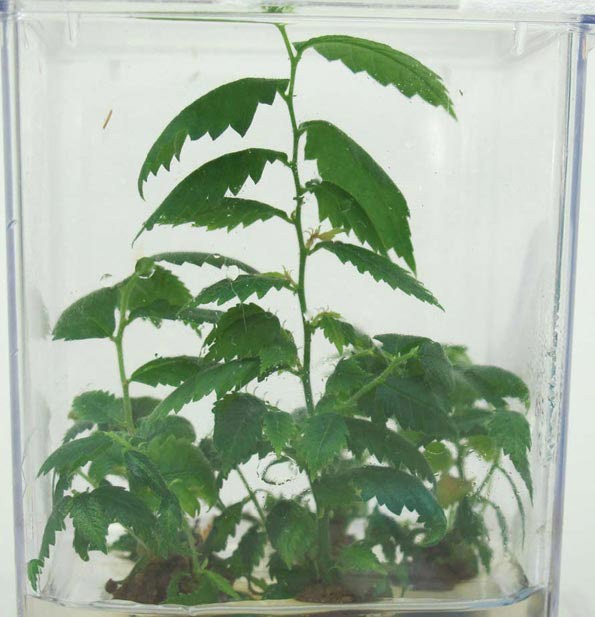American elms were once a favorite tree in urban landscapes across America, prized for their elegant shape. When Dutch elm disease found its way to the United States in the 1930s, it slowly moved across the continent and killed nearly 95 percent of the population. The pathogen continues to infect trees not previously exposed.
Most efforts to clone healthy, mature elms for studies of resistance and conservation have failed. Now a research team from the University of Guelph in southwestern Ontario has succeeded in developing a process for cloning the trees that they say can quickly produce thousands of plants.
“We want to make a collection of American elms from those that have survived over a long period of time and preserve that germplasm. If we find that the specimens are resistant to the disease, we can use our cloning technology to make multiple plants and distribute them where they are needed,” said Praveen Saxena, professor of plant agriculture. “Once you have a large population available, you could study them and select for disease resistance. When you clone plants, there are occasional genetic mutations, which might give us a clue to resistance.”
Saxena said his process is akin to photocopying the trees. Starting with one mature tree, planted on the Guelph campus sometime between 1903 and 1915, the researchers collected fresh shoot tips and dormant buds and grew them on a culture medium to create genetic clones, which were separated, recultured, and planted in a greenhouse. Those plants are scheduled to be transplanted outdoors this year.
“The key to our success was that we figured out that the trees have high levels of plant growth regulators already,” explained Saxena. “To optimize the plant hormone levels for multiplying, the key is to reduce hormone levels to effectively clone them.” The hormones, or auxins, were reduced by adding an auxin inhibitor to the growth medium, which also reduced callusing at the cut end of the plants.
The researchers also learned that elm shoots and buds collected from April to June had reduced rates of contamination, better growth, and less browning than buds collected at other times of the year.
Writing in the Canadian Journal of Forest Research, Saxena and his colleagues said that their research provides “a framework to establish germplasm collections of other recalcitrant threatened and endangered woody plant species. Application of the techniques of genetic engineering can overcome many of the limitations associated with conventional breeding programs of tree species.”
Saxena plans to continue his study of American elms and other trees to try to understand the genetic mechanism of disease resistance.


